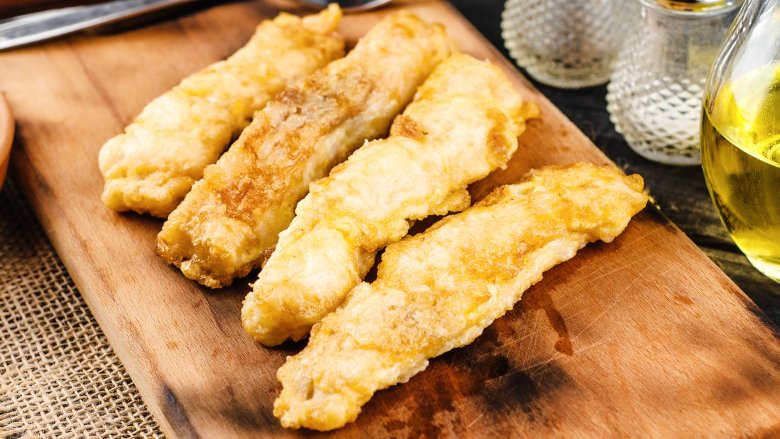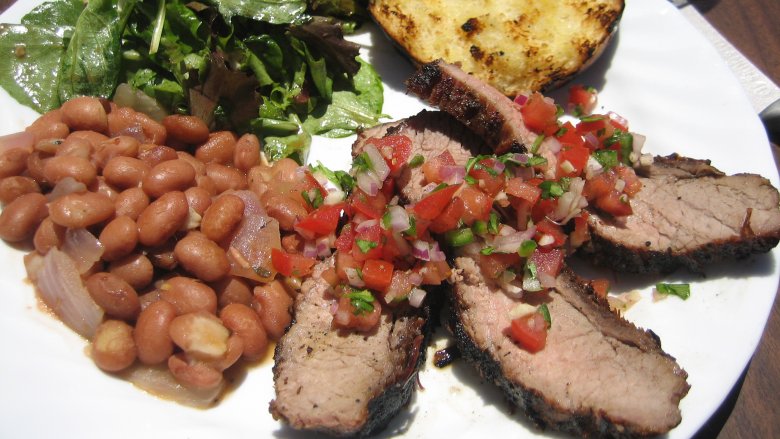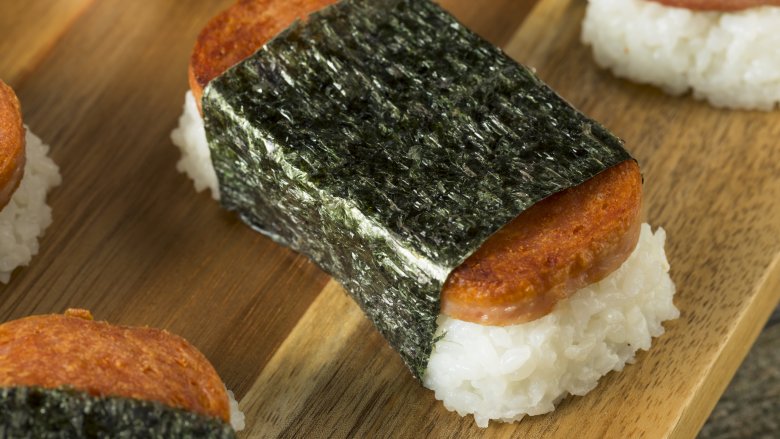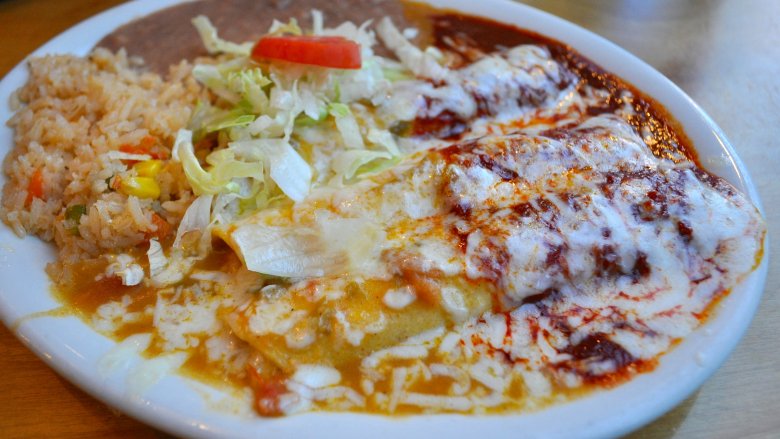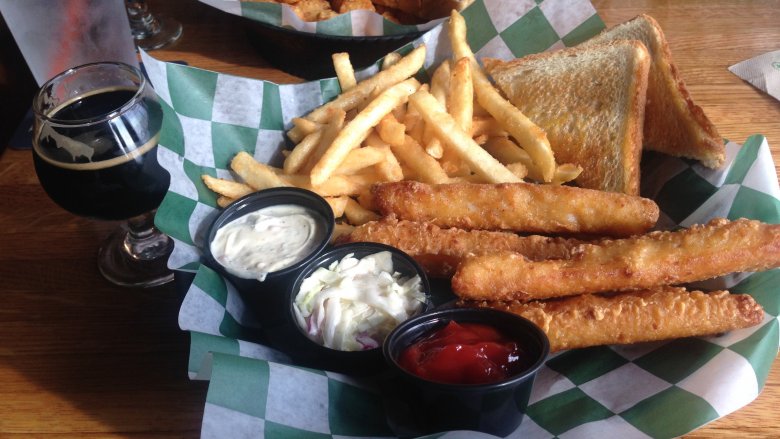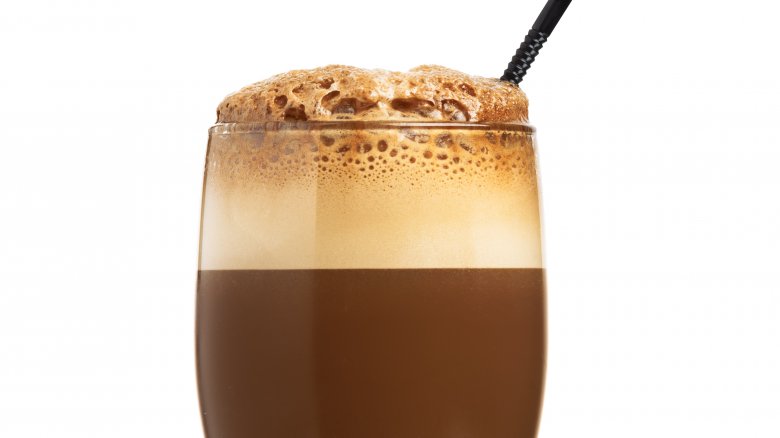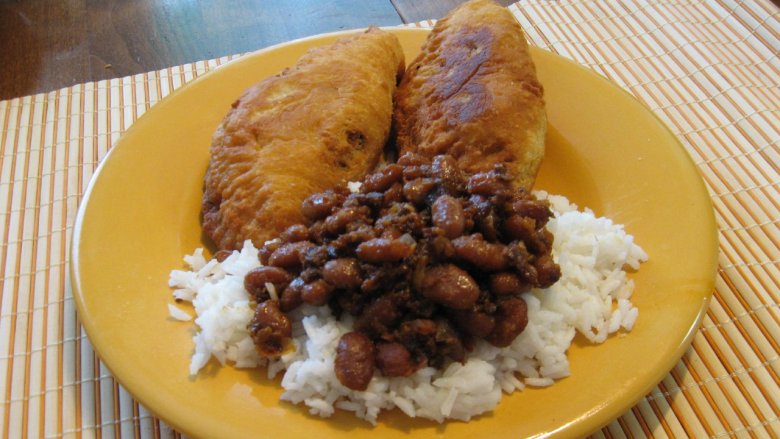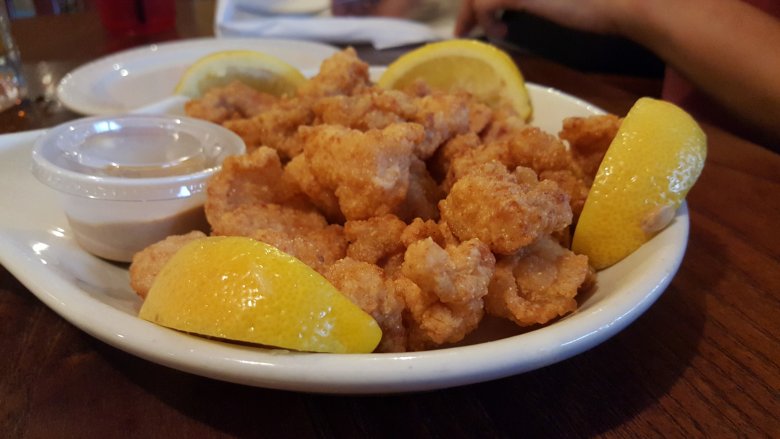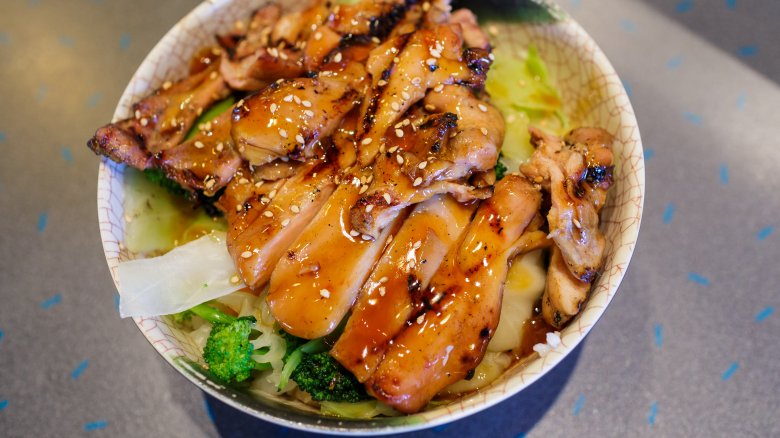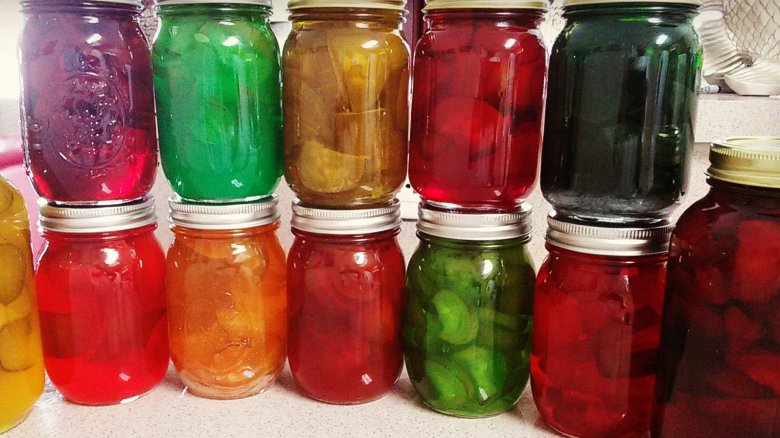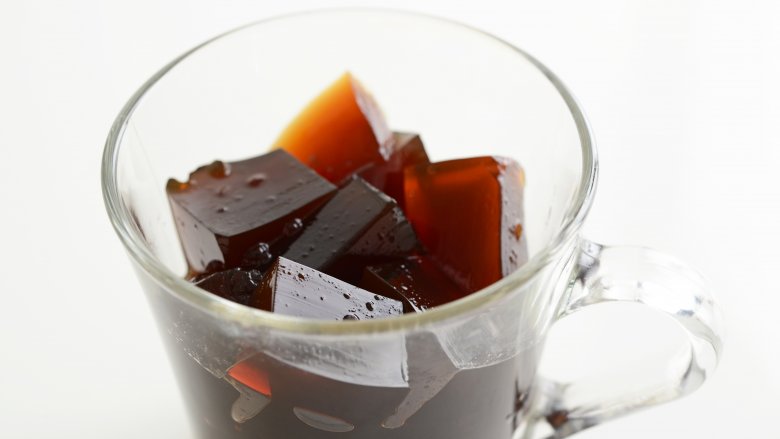Regional Specialties Every American Should Try At Least Once
From the mountains to the plains, the deserts to the forests, and sea to shining sea, this is a mighty big country we've got here — and foodwise, we've put all that room to excellent use, developing richly diverse (not to mention delicious!) regional traditions that are every bit as essential to an understanding of American cuisine as cheeseburgers, chili dogs, or, um, deep-fried bubblegum-flavored marshmallows.
Take sandwiches: You've got your Louisiana po' boys and muffulettas, your Philly cheesesteaks and Iowa pork tenderloins, your lobster rolls from Maine and your other lobster rolls from Connecticut (yes, there's a big difference). Though their national reputation precedes them, each one retains its regional flavor — you can take the sandwich out of the place, but you can't take the place out of the sandwich.
And still other local specialties remain rooted to the spot — whether because they're little-known beyond their home turf or because they simply taste better in their original context (do you really want a dirty-water dog from anywhere other than a New York City pushcart?). Here are some examples worth traveling far and wide for.
Santa Maria BBQ
You know your burnt ends from your baby backs, your mesquite smoke from your post oak, your Alabama white sauce from your Carolina gold. You've scoured byroads and backways from Texas to Tennessee in search of the most succulent brisket and ribs on God's green earth. But did you barbecue buffs ever think to try your luck in California?
If you're rolling your eyes at the mere thought of those left-coasters going as low and slow as the pit-masters in America's best-known bastions of barbecue, put a cork in it (preferably from a bottle of Central Coast Syrah) — they don't even try. On the contrary, the style of outdoor meat cookery that has evolved from the Hispanic traditions of the ranching communities in Santa Barbara County over the past century and a half is unique in its use of the bottom-sirloin cut of beef called tri-tip, which is simply seasoned and grilled over an open flame fueled by local red oak. It's typically accompanied by native pink pinquito beans, various salads, tortillas or garlic bread, and salsa. And to wash it all down, you bet they pour the Syrah or Pinot Noir for which the area is now known. So be it — que será será (or rather 'cue Syrah Syrah).
Spam musubi
For some, Hormel's notorious canned pork product exists only as the butt of countless jokes; for others, it's merely synonymous with the worst kind of e-mail. But for millions of Pacific Islanders, Spam has served as a staple since World War II, when the Army distributed to its bases in mass quantities.
Talk about a melting pot: In Hawaii today, the Minnesota-made lunch meat stars in all manner of dishes that otherwise reflect the state's Asian heritage, from ramen to fried rice. But it's found its highest calling as a topping for the seaweed-wrapped Japanese rice treat known as musubi. Perhaps it's some measure of consolation to the families of our wartime internment-camp prisoners that necessity is the mother of invention. The creation they were forced to make do with is now not only "the quintessential Island snack favorite," as Hawai'i Magazine puts it, but a nation-sweeping trend in its own soft and chewy, salty and sweet soy–seasoned right. Hey, if the Japanese could win the hearts and palates of mainstream Americans with raw fish, feeding us our own homegrown ham should be a snap.
Christmas-style
It's got nothing to do with the holidays, but everything to do with the festive spirit of the Southwest; it's not a dish per se, but it transforms every dish it touches. In New Mexico — where native and Hispanic foodways crossed centuries ago to form the foundation of a distinct cuisine — the phrase "Christmas-style" refers to the custom of smothering enchiladas, burritos, huevos rancheros, and more in green and red chile, side by side, making for two completely different but equally exhilarating taste sensations on a single plate.
If you're not familiar with either green or red chile, we're both sorry and jealous — sorry for what you've been missing all this time, jealous that your whole chile-loving life is still ahead of you. Essentially the lifeblood of New Mexican cuisine, green chile starts with its namesake — the unripe fruit of the pepper plant Capiscum annuum — which is roasted to serve as the basis for a sauce or stew. Fully ripened and dried pods are used for earthier, generally smoother red chile.
All that said, no mere description can do the experience of eating them justice, so you'll just have to trust us until you can try them for yourself: A day without Christmas-style is like a year without Christmas itself, confusing and joyless.
The Friday fish fry
The humblest of traditions tend to make for the proudest of preservationists, which is why no lesser an authority than the Wisconsin Board of Tourism boasts a handy-dandy history of the Friday fish fry on its website, describing its Prohibition-era spread from the homes of observant Catholic immigrants to the old-school taverns and supper clubs scattered across the Midwest.
Its appeal was and is simple yet multifold. "Fish was abundant and cheap, and frying didn't exactly require cooking school" — a bonus for the barkeeps who had to eke out a living during the booze freeze. The fiercely local angle is an added bonus in today's foodie culture. Though less common and slightly more expensive than they used to be, according to Serious Eats, perch, walleye, bluegill, and smelts from Lake Michigan remain the heart (and head, gills, and tail) of the fish fry, while sides like potato pancakes and rye bread "show the influence of the many Eastern and Central European immigrants" who started it all. Of course, their influence also explains the beer that is usually served with meal. (No one can really explain why there are also relish trays involved, but we're all for the retro hors d'oeuvre — if it's not a fry without fish, it's not a party without pickles. OK, and beer.)
Egg creams
Egg creams are so hard to picture outside of New York City that it's like the old conundrum about a tree falling in the forest: If you taste one anywhere else, does it really have a flavor?
Certainly it won't have the same flavor as one you might order in the vintage diners and delis of the Lower East Side or Brooklyn — which, as Thrillist points out, "is not surprising, because it's here, in the traditionally Jewish neighborhoods, where egg creams once thrived" (and where, it's also not surprising, they were probably invented around the turn of the twentieth century).
Obviously, we're not just talking about ingredients here. Though true seltzer is a rarity even in New York, you can purchase some fine approximations online, and the same goes for Fox's U-Bet chocolate syrup; the only other component is milk. (If you're suddenly wondering why it's called an egg cream despite containing neither, the answer is that no one really knows.) But the savor of even the most lovingly homemade version in Anytown USA just can't compare to that of even the most carelessly concocted but still-real deal at a New York counter, preferably as the accompaniment to hot pastrami on rye with a side of half-sours. If you're gonna do it, do it right.
Natchitoches meat pie
Few American cities can rival New Orleans for its culinary wealth. Gumbo and jambalaya, oysters Rockefeller and bananas Foster — the Big Easy's the birthplace of all that and much more, and we owe those crazy Creoles and Cajuns big time for doing us such a solid.
But there's one Louisiana treasure it can't claim: the Natchitoches meat pie. Because, as JSTOR Daily writes, because it's often mistaken for an empanada, many food historians suspect the savory semicircular pastry stuffed with seasoned ground beef and pork, onions, peppers, celery, and garlic came courtesy of the area's Spanish settlers. But others wonder whether it has its roots in the local French-Canadian community's tourtière, "a large pie with a buttery, flaky crust and a minced meat filling flavored with warm spices." Frankly, we don't care if it was beamed here by Martians. It's a fried meat pie, so it's awesome.
Alligator
Conch fritters, Cuban sandwiches, stone-crab claws, Key lime pie, Mickey Mouse–shaped everything: These count among Florida's many claims to national foodie fame. But the Sunshine State has a dirty (or rather swampy) little secret in the alligator, whose creepiness betrays its mild flavor — which according to Esquire tastes something like "a free-range chicken and a fish had a baby."
It's most commonly served in the form of deep-fried nuggets, grilled ribs, or burger-type patties — but not necessarily in public. In fact, you might be pretty hard-pressed to find at local restaurants. So if you're not down with a wild goose chase, much less a wrestling match, maybe just purchase the meat online and cook it yourself. Some of the cooler recipes we've come across include General Tso's alligator with spicy peanut rice, alligator-chili Frito pie, alligator hush puppies, and human-stuffed roast alligator. (Just kidding about that last one.)
Seattle-style teriyaki
Of the roots that teriyaki has put down in the U.S., no doubt the deepest run in Hawaii, where nineteenth-century Japanese immigrants likely spread the technique of glazing grilled meats in a reduction of soy sauce and sake or mirin. The locals added sugar along with ginger, green onion, and garlic, and a fusion tradition was born that captivated the nation.
But there's another Western state that has kept its own taste for teriyaki on the down-low for decades: Washington. As of late 2017, The Takeout counted some 500 teriyaki shops between Seattle and Tacoma, dishing up chicken, beef, and more, coated in what Inquisitive Eater's Joseph Warren calls an "unapologetically sweet sauce" that may contain pineapple, citrus, sesame oil, and other ingredients that aren't in traditional teriyaki. Much of it, according to Warren, reflects the influence of the city's Korean-American population — but recipe variants aside, the dish is often described, as in The Takeout, as "Seattle's Philly cheesesteak, its Chicago hot dog."
Kool-Aid pickles
Sometimes called Koolickles, these Mississippi Delta glitches in the culinary space-time continuum are exactly what they sound like they are: pickles marinated in fruit-flavored drink mix, generally red (which, according to food historian Adrian Miller, is often a flavor as much as it is a color).
When were they invented? No one knows, though Miller says "they've been around for at least a generation," as has "sticking a peppermint stick inside a pickle and letting it dissolve" for a similar salty, sweet, and sour sensation. Why were they invented? No doubt for the same reason as the Scandinavians salt licorice and the Japanese plums: Because such strong contrasts stimulate the palate more intensely than single flavors. They've developed a cult following in such short order that Andrew Zimmern offers a recipe on his website, noting that they "perfectly complement barbecue," while cocktail publication Supercall shows readers how to spike them with vodka. After all, they do make a little more sense than Portlandia's pickled Band-Aids and parking tickets.
Coffee Jello
Boston cream pie may be New England's most celebrated sweet, but it's not the only one they have. In fact, it might be the least interesting choice you could make if you find yourself in Beantown. I'll see your custard-layered, chocolate-glazed yellow cake and raise you a more-colorful curio that could only have come from the hard-nosed, hard-drinking stock of the Northeast.
By "hard-drinking," I don't just mean booze. New Englanders were such coffee fiends long before they began running on Dunkin' that they even consumed it in jiggly form for dessert. That's right, we're talking about coffee-flavored jello. It may sound strange, but it has big fans in Boston. As Atlas Obscura explains, "the simple combination of coffee, gelatin, and sugar was popular during the early twentieth century," and while its heyday has passed, it's still served with a dollop of whipped cream at one of America's oldest restaurants, crusty Boston charmer Durgin Park.
